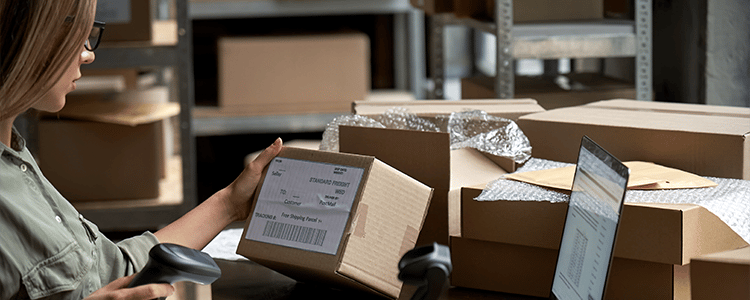In 1982, the first online marketplace opened for business. Called the Boston Computer Exchange, it officially launched the dawn of eCommerce.
Technology has come a long way since then. Now, eCommerce is one of the most popular avenues for retailer/consumer connection.
If you’re considering modernizing your eCommerce processes, it’s important to understand some of the latest developments in this space. Today, we’re discussing recent eCommerce technology trends so you can start thinking about the features you might want in a new eCommerce system.
Top eCommerce Technology Trends
1. Increased Emphasis on the Omnichannel Customer Experience
By 2025, analysts predict that annual mobile retail sales in the U.S. will double to more than $700 billion.
While mobile retail is on the rise, a majority of shoppers still prefer to go into a physical store to make their final purchase. According to one survey, 54% prefer brick-and-mortar interactions over any other channel.
This means a seamless omnichannel customer experience is paramount. eCommerce retailers should create opportunities for interaction that replicate and enhance those that occur in person.
The 2025 Top 10 ERP Systems Report
What vendors are you considering for your ERP implementation? This list is a helpful starting point.
2. Subscription Services
The subscription market is growing. In fact, one report estimates that the market value will be worth $904 billion by 2026.
There are three subscription models to consider for your eCommerce business:
• Replenishment model: Automated purchases
• Access model: Special perks or lower prices for members
• Curation model: Delivers personalized experiences with each shipment
Can your business accommodate a subscription? If not, it may be worth your time to look into eCommerce software that can support this function.
3. eWallets
Also known as mobile wallets, eWallets allow shoppers to pay for merchandise or services using their smartphones. Once considered a novelty, it’s now an essential capability for anyone in the eCommerce industry.
This technology is convenient as it does not require consumers to carry cash. However, there’s another reason why it’s become so popular: It’s more hygienic.
While digital wallets have been slowly increasing in popularity, they’ve recently catapulted. By 2025, researchers predict that there will be more than 4.4 billion unique digital wallet users. This is a major upswing from 2020 when the number of unique users was only 2.6 billion.
4. Product Customization
Gone are the days when online shoppers were satisfied with generic, universal products. Now, they’re seeking customization in almost every retail interaction.
Thankfully, advancements in manufacturing technology are enabling companies to respond to this demand. With the right manufacturing ERP software, you can encourage your shoppers to become active participants in the product design process.
This creates a more immersive customer experience, which increases satisfaction. The more options you can provide to your shoppers, the more likely they are to engage with your brand and tell others about it.
5. Blockchain
In the retail space, blockchain has two primary functions. First, companies can choose to allow shoppers to use cryptocurrency for payment. Second, they can leverage this technology to sell online products and artwork as non-fungible tokens, or NFTs.
The blockchain itself is highly secure, offering retailers a decentralized digital ledger in lieu of traditional banking options.
6. Augmented and Virtual Reality
One of the main drawbacks to shopping online is that you can’t try anything on or see how it looks in real life. Augmented reality (AR) and virtual reality (VR) are out to solve this problem.
When you implement an eCommerce system that uses AR or VR, you can create a more realistic shopping experience. Customers can use the tools to “try on” clothes in virtual dressing rooms, digitally place furniture in their homes, and more.
7. CRM Integration
Many retailers use ERP systems to automate and streamline their back-office functions. However, not all retailers have embraced CRM software as readily.
Now, CRM software has become more of the norm.
As retailers connect with shoppers across a variety of online channels, CRM software is allowing them to aggregate data in a single system. Support reps can access data insights to provide personalized customer service, and sales teams can leverage it to make sales forecasts. Meanwhile, operations managers can calculate inventory needs based on historical trends, allowing retailers to keep their budgets lean.
If you already have an ERP system in place, consider integrating it with a CRM system for seamless communication and process automation.
It’s Time to Embrace Modern eCommerce Technology
The eCommerce industry has evolved over the past 40 years. As a retailer, it’s important to stay on top of the latest movements and think about ways your organization can modernize.
While these eCommerce technology trends can offer retailers a competitive edge, it’s important to be strategic with your adoption. Our team of enterprise software consultants can help you weigh your options and select the best solutions for your team. Contact us below to get started.













